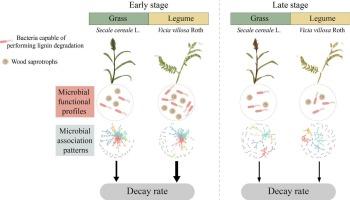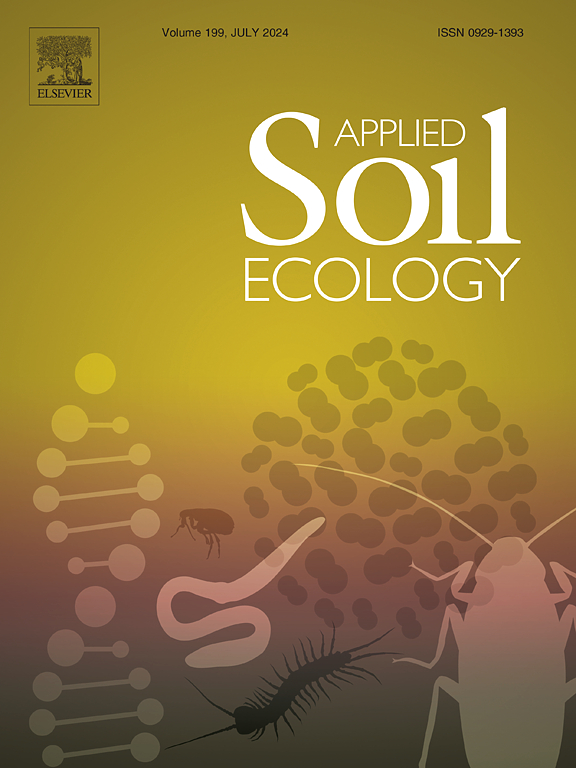垃圾质量与微生物面貌的改变共同调节覆盖作物垃圾的腐烂
IF 4.8
2区 农林科学
Q1 SOIL SCIENCE
引用次数: 0
摘要
覆盖作物废弃物腐烂是农业生态系统养分循环的一个重要组成部分;然而,废弃物质量如何在不同腐烂阶段通过微生物影响腐烂过程仍不清楚。在此,我们利用两种冬季覆盖作物(豆科和禾本科)的枯落物进行了 112 天的腐烂实验,以阐明农业生态系统中枯落物栖息微生物的时间动态与枯落物腐烂之间的关系。在腐烂初期(0-28 D),豆科植物枯落物的腐烂速度(k = 0.064 ± 0.002 天-1)快于禾本科枯落物(k = 0.053 ± 0.003 天-1)。在腐烂的早期阶段,豆科植物垃圾(分别为 0.003 % 和 47.77 %)比禾本科垃圾(分别为 0.002 % 和 39.24 %)中能够降解木质素的木质噬菌体和细菌通常更多。枯落物的质量通过其对微生物功能特征和相互作用的影响来影响腐烂过程;随着特定功能区丰度的增加和网络复杂性的降低,豆科枯落物的腐烂程度也在增加。总之,我们的研究结果表明,枯落物质量影响了枯落物的腐烂过程,相关的枯落物栖息微生物面仅限于腐烂的早期阶段。本文章由计算机程序翻译,如有差异,请以英文原文为准。

Litter quality regulates cover crop litter decay alongside altered microbial facets
Cover crops litter decay is a vital component of nutrient cycling in agroecosystems; however, how litter quality affect decay process via microbial facets at different decay stage remains unclear. Here, we performed a 112-d decay experiment using the litter of two winter cover crop species (a legume and a grass) to clarify the relationship between the temporal dynamics of litter-inhabiting microbes and litter decay in agroecosystems. Legume litter decayed faster (k = 0.064 ± 0.002 days−1) than grass litter (k = 0.053 ± 0.003 days−1) during the early stage (0–28 D) of decay. Wood saprotrophs and bacteria, capable of performing lignin degradation, were generally more abundant in legume litter (0.003 % and 47.77 %, respectively) than in grass litter (0.002 % and 39.24 %, respectively) during the early stage of decay. Litter quality affected the decay process through its effects on microbial functional profiles and interactions; legume litter decay increased as the abundance of specific functional guilds increased and network complexity decreased. Overall, our findings indicated that litter quality affected litter decay process and relevant litter-inhabiting microbial facets is restricted to the early stage of decay.
求助全文
通过发布文献求助,成功后即可免费获取论文全文。
去求助
来源期刊

Applied Soil Ecology
农林科学-土壤科学
CiteScore
9.70
自引率
4.20%
发文量
363
审稿时长
5.3 months
期刊介绍:
Applied Soil Ecology addresses the role of soil organisms and their interactions in relation to: sustainability and productivity, nutrient cycling and other soil processes, the maintenance of soil functions, the impact of human activities on soil ecosystems and bio(techno)logical control of soil-inhabiting pests, diseases and weeds.
 求助内容:
求助内容: 应助结果提醒方式:
应助结果提醒方式:


